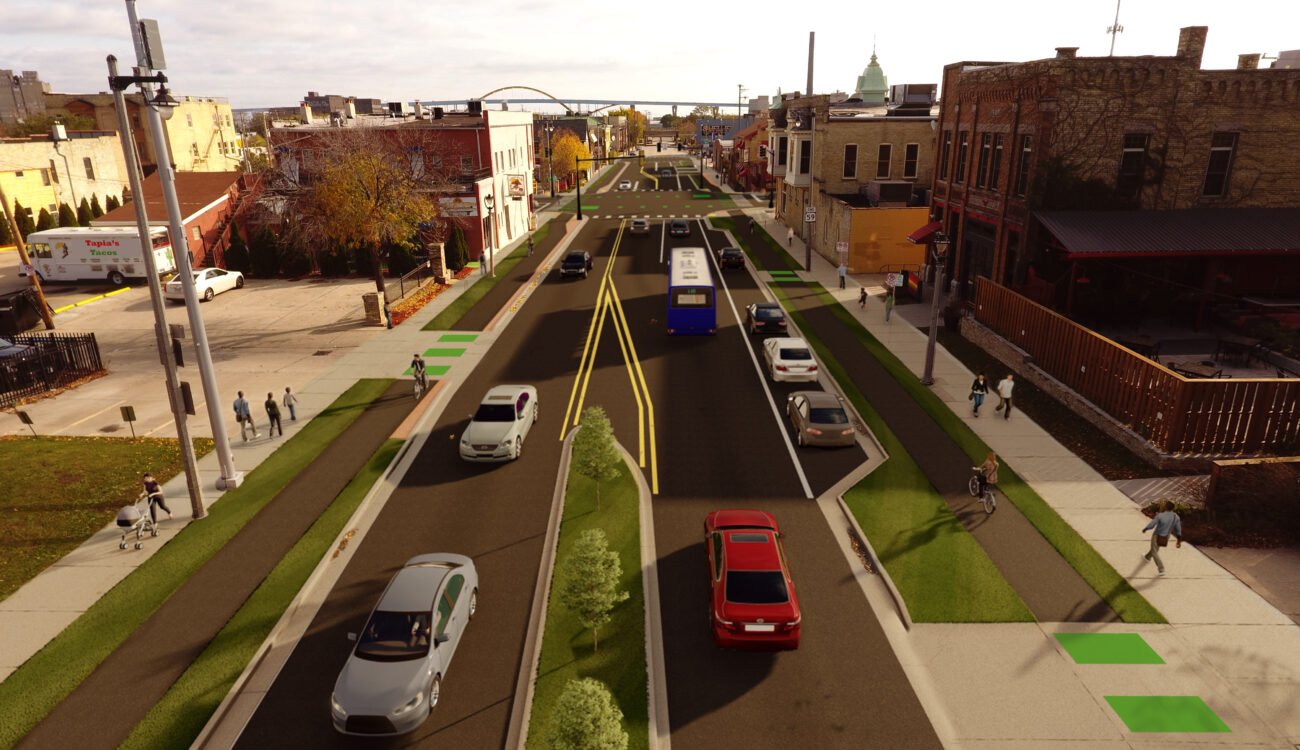
Designing for All Road Users on Milwaukee’s National Avenue
For years, Bike Fed staff have kept a close eye on the National Avenue project on Milwaukee’s south side.
National Avenue is a major thoroughfare, nearly the entirety of which is on the City’s Pedestrian High Injury Network. It is a trucking route and state trunk highway, which means that the Wisconsin Department of Transportation has an important stake in the project. State DOT urban arterials like National Avenue are a challenge for road safety across the state and country. Many are dangerous by design.
Late in 2022, we wrote our analysis of the project until that point. We did not yet have a detailed design concept, and we were extremely concerned that this project would not make substantial improvements to safety. This spring, we walked the entirety of the project with national pedestrian advocate Jonathon Stalls, whose comments illustrate the dire need for change.
This month, project staff released proposed designs to the public. Thanks to the great work, creativity, and willingness to collaborate on the part of both City and WisDOT staff, as well as the support of engaged advocates and dedicated elected officials, it looks like we will get an impressive change to the road.
We would like to express our deep appreciation for DPW and WisDOT staff who worked hard to develop designs that will almost assuredly save lives, as well as the leadership of Mayor Cavalier Johnson, Alderman José Pérez, Alderwoman JoCasta Zamarripa, Commissioner Jerrel Kruschke, and City Engineer Kevin Muhs.
Insights for All Wisconsinites
To aid advocates across the state, we have prepared an in-depth review of how the design elements proposed benefit all road users. We hope that all Wisconsin residents can use this project to understand what is possible on highways like National Avenue. We encourage you to identify a state highway in an urban or town setting near you as you read this post. Imagine how these life-saving designs can also be a part of your city or town’s infrastructure. The ground is truly shifting on what is possible.
Do you live in Milwaukee or use National Avenue? Submit a comment in support of this design!
Renderings of different sections of National Avenue
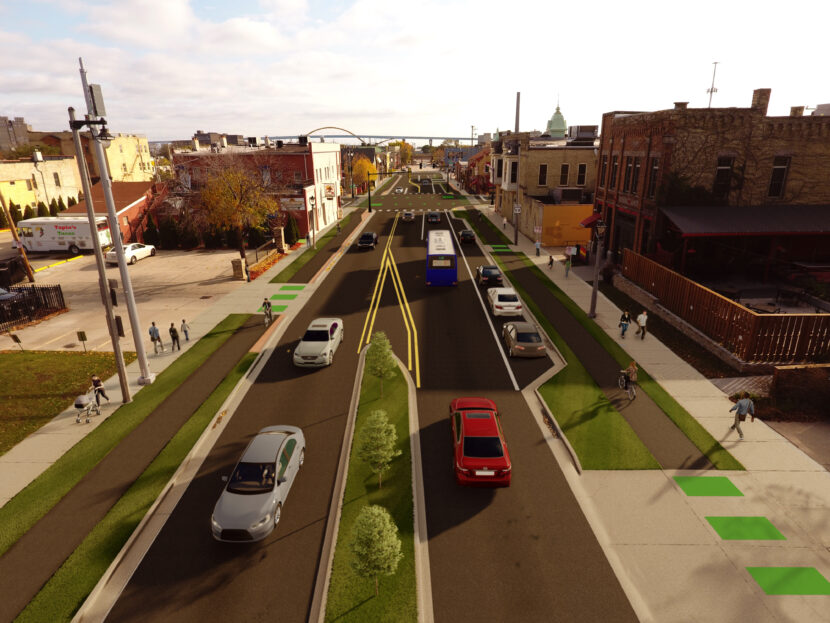
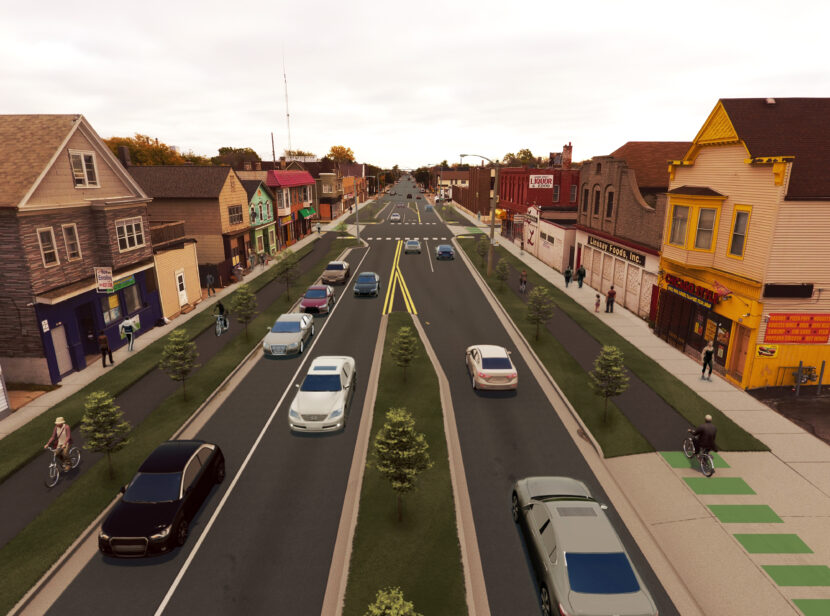
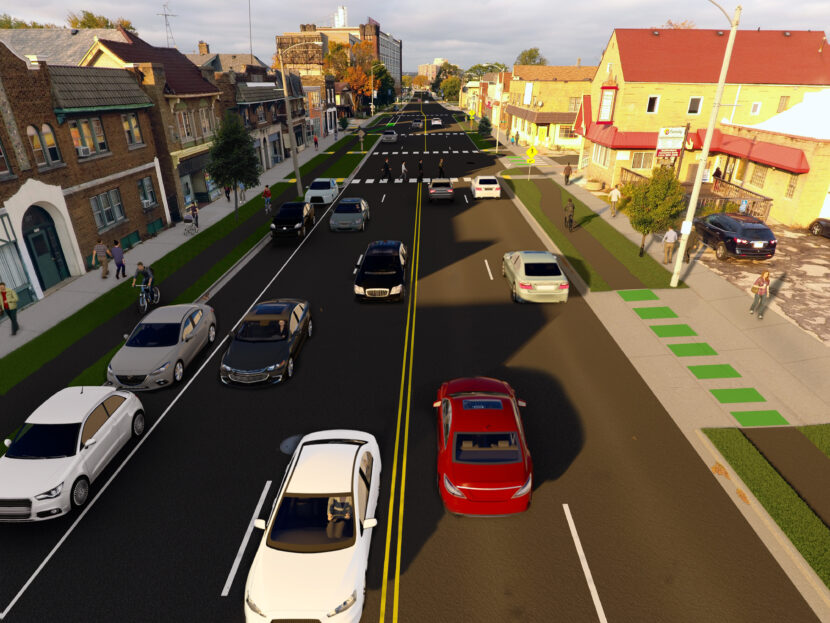
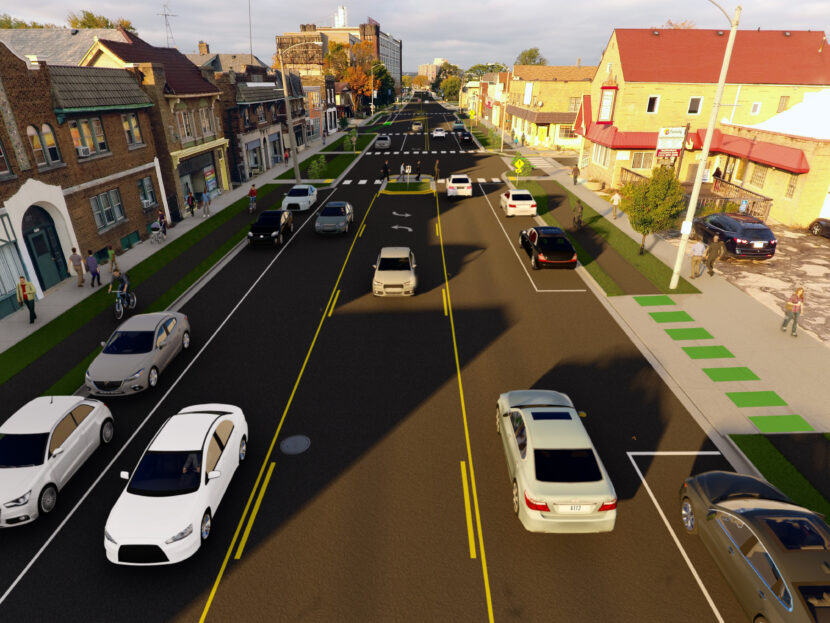
Thank you to the City of Milwaukee for providing these images. Learn more using our guide.
Background: Policy Matters
The City of Milwaukee has adopted several key policies to make streets safer: Complete Streets and Vision Zero. The latter, adopted in 2022, was unanimously passed by Council. The resolution commits the City to eliminating all road deaths and serious injuries in 15 years. Former Bike Fed staff member Jessica Wineberg was recently hired as the City’s first Vision Zero Policy Director.
Complete Streets (passed in 2018) provides City staff with the mandate to design roads in ways that prioritize the safety and access for all road users. The Bike Fed was actively involved in the implementation of the Complete Streets policy through a 3-year grant from the Medical College of Wisconsin, in partnership with Milwaukee DPW and Safe and Healthy Streets. The City also joined NACTO, an organization that sets the standard for top-tier infrastructure for all road users. Additionally, Mayor Cavalier Johnson just committed to 50 miles of protected bike lanes built or designed and funded by 2026.
NACTO provides the blueprints for redesigning streets. Redesigning arterials like National Avenue using the Complete Streets framework is a critical component to achieving Vision Zero’s goals.
Examples of innovative design elements for National Avenue
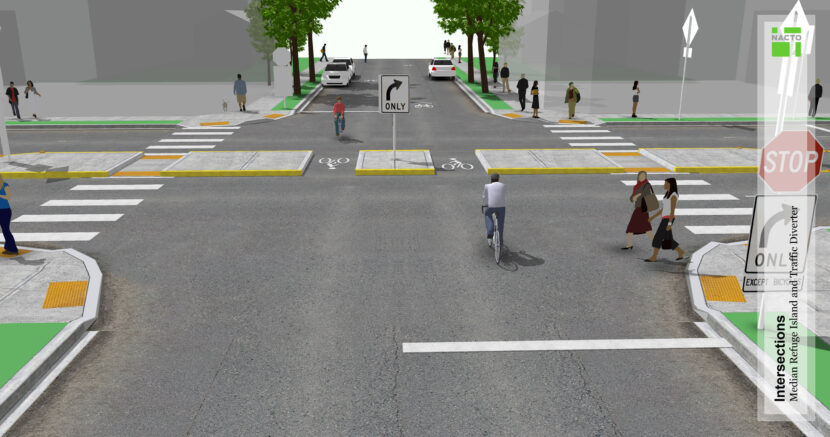
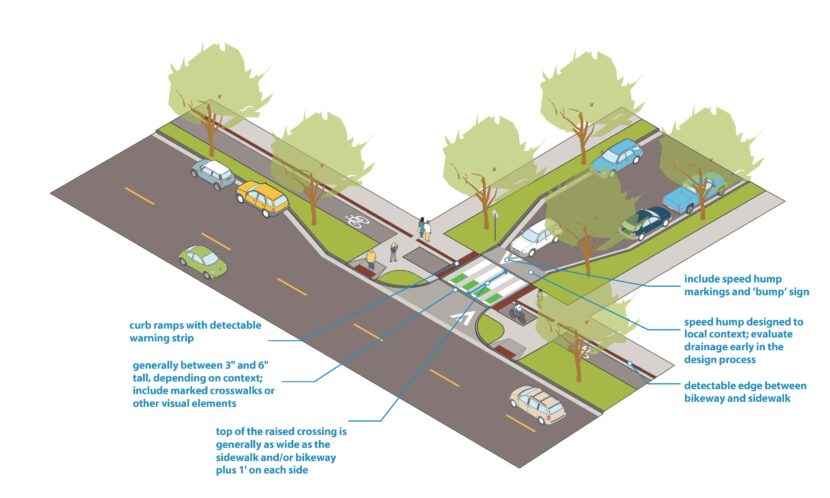
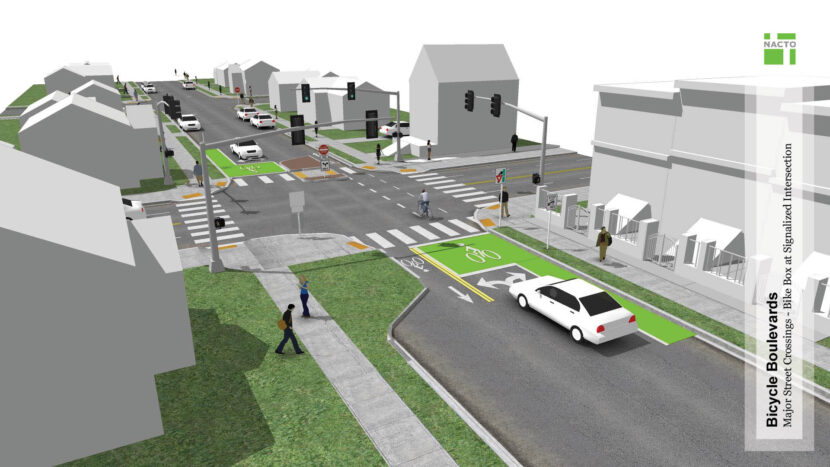
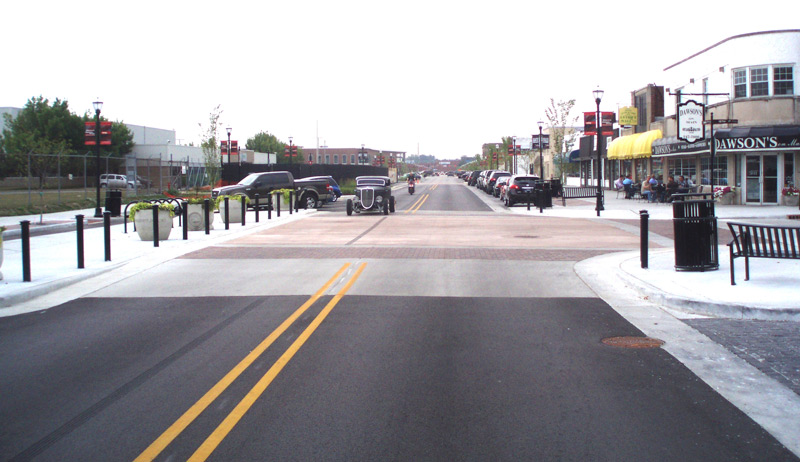
Thank you to the City of Milwaukee for providing these images. Learn more using our guide.
Major Takeaways
In addition to the design elements, we have a few major takeaways about the project process and how we got such good designs for all users.
- One prior concern regarded the re-classification of this project from a reconstruction to a pavement replacement. Pavement replacement projects are becoming more common. Despite the name, pavement replacements don’t preclude major road improvements. However, this change introduced uncertainty, particularly around which jurisdiction would pay for bike/ped improvements. We want to congratulate the City and WisDOT on finding a solution to this challenge. Through a redesign that includes raised bike facilities, the state was able to save costs since less concrete is needed than for additional car travel and parking lanes. Bike facilities are cheaper to build and maintain – they are a fiscally responsible choice. We hope this kind of analysis will be applied to other projects.
- The National Avenue project is deeply connected to the I-94 highway project, a parallel highway nearby. Part of the goal of this project is to remove traffic from National and instead encourage use of I-94. That said, we know through the success of other cities that when other options are safe and convenient, many people exchange some of their driving trips for getting around by other means. We hope that in future projects, the cities and states adopt bold designs even if there is not a parallel highway nearby.
- National Avenue currently has one bus route (the 18). There is interest in future Bus Rapid Transit (BRT) or streetcar expansions along this corridor. The designs do not emphasize transit, but there is interest in improved transit facilities. Stay tuned!
Want to see more of this kind of advocacy?
Your donations directly fund our staff time advocating for project improvements such as this. If our advocacy on this project inspires you to financially support the Bike Fed, please make a financial donation today.